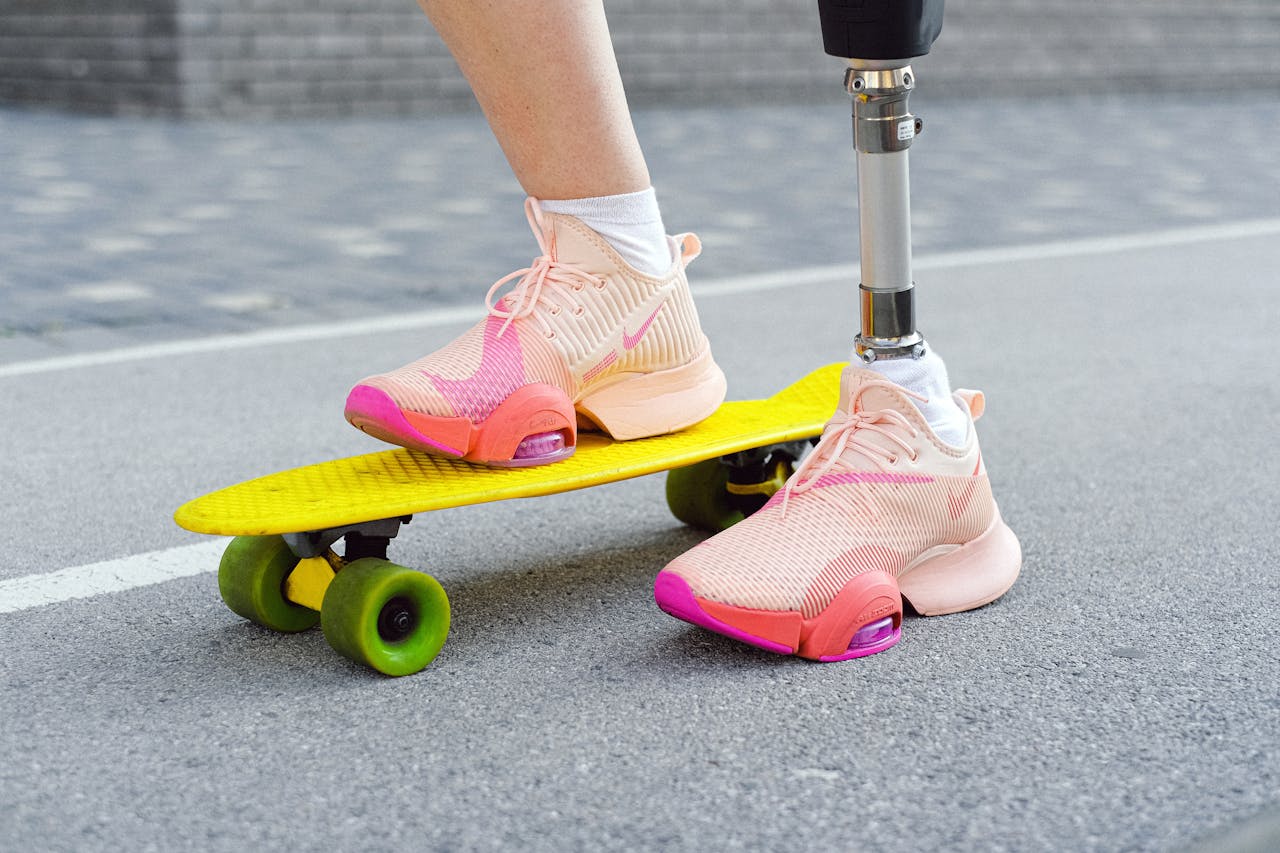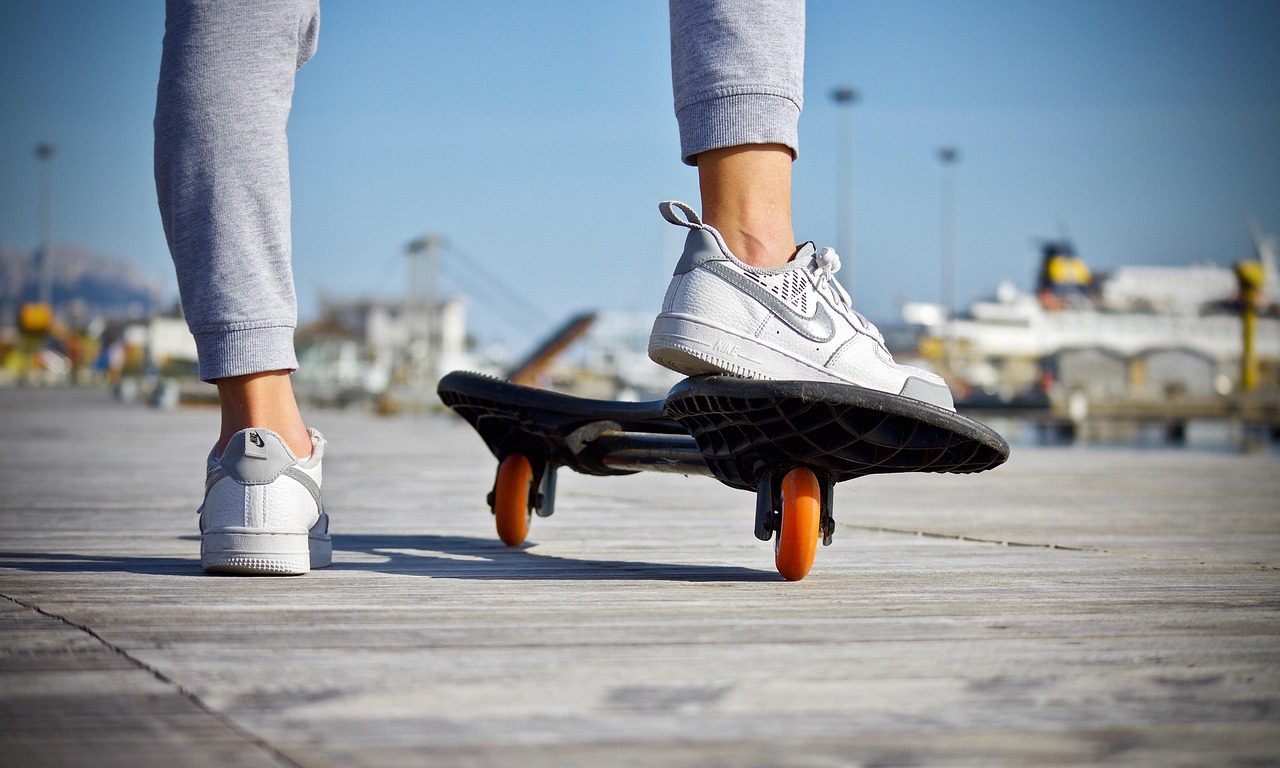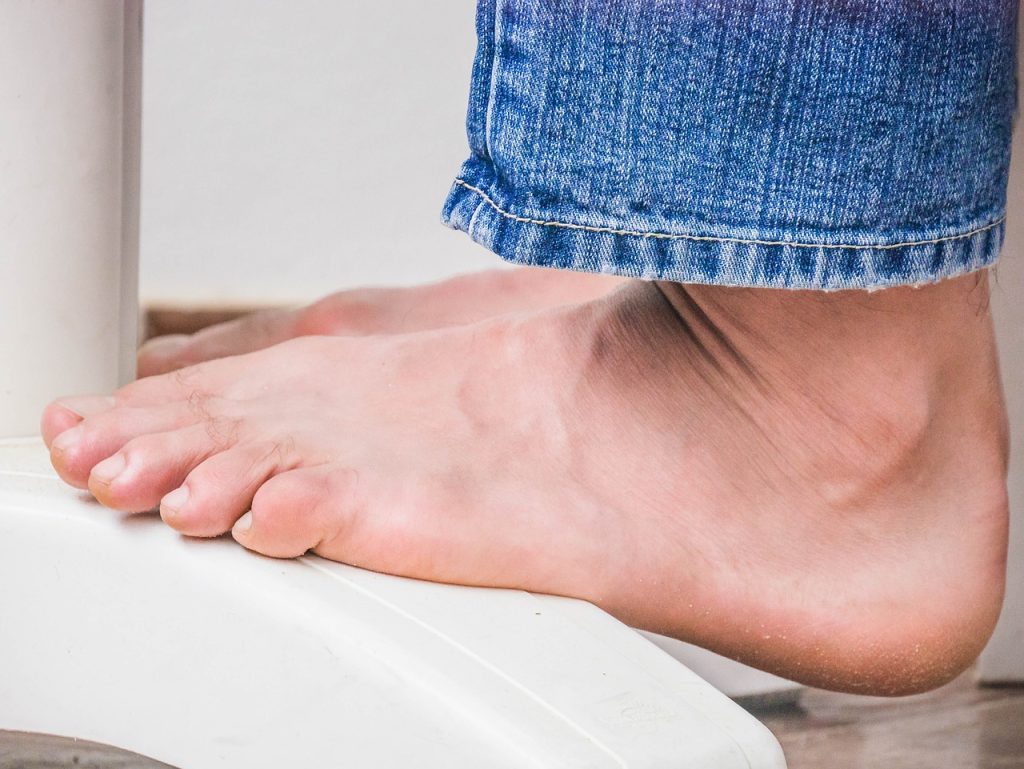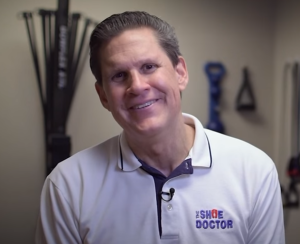A 3D foot scan often takes between five and ten minutes to finish, making it one of the fastest ways to check foot shape and size. For safety, you can count on the process. Most foot scanners use only light, like lasers or cameras, and do not touch your skin or use radiation. You stand or sit while the scan happens. Many people use these scans for custom shoes or orthotics. Clinics, sports stores, and shoe shops use 3D scans to get a clear and exact read of your foot. If you want to know what happens during a scan or what to expect, you will find the next sections helpful for your needs.
Key Takeaways
- A typical 3D foot scan takes just a few minutes. Additional time is needed for preparation and data processing, making it a quick and efficient procedure for most users.
- It is safe, non-invasive, and uses certified LED, laser, and LiDAR technology that complies with industry safety standards and presents a low risk.
- The advanced technology we use allows us to scan your feet with millimeter-level precision, which is a crucial requirement when designing orthotic devices and footwear for the best fit.
- Your privacy is safeguarded by robust measures such as stringent data encryption, secure storage protocols, and transparent usage policies, ensuring that your information remains confidential and secure.
- Whether in a clinical or retail setting, your 3D foot scanning experience is comfortable and guided, with experienced professionals there to assist and answer questions throughout the scan.
- You can harness the advantages of 3D foot scanning by finding providers that utilize certified, cutting-edge technology and value user privacy and comfort.

How Long Does a 3D Foot Scan Take?
A 3D foot scanner is a quick, non-invasive method to capture the precise dimensions of your feet, allowing for accurate foot assessments. The majority of scans require only a few minutes, significantly less time than traditional casting, which can take up to 16 minutes. With advanced 3D scanning technology, a complete 3D scan can be generated in as little as one second, depending on your requirements, scan type, and hardware.
1. Preparation
Before the 3d foot scanning technology is utilized, your provider will gather a comprehensive foot health history. You may need to remove shoes or wear specialty socks to assist the 3d foot scanner. In some cases, the staff will perform a quick scan, as they did with me at one store. This preparation helps you know what to expect and can alleviate any apprehension you might feel. The scanning room is designed to be quiet and distraction-free, keeping you centered and at ease.
2. Positioning
Getting your feet in the right spot is the trick when using a 3D foot scanner. You’ll simply be asked to place your foot or both if necessary, on the scanner platform. The 3D scanning process might require repositioning or angling the device to view all sides of your foot. They will ensure that you are relaxed and not tense. Both feet can be scanned if a complete foot assessment is needed.
3. Scanning
Once you’re set, the 3d foot scanning technology initiates. High-tech equipment, like structured light scanners, collects thousands of data points rapidly, in some cases, within a minute or two. Stand still; even a small movement can blur the scan. This advanced technology works fast, much faster than traditional foot casting, ensuring the wait is short. The scan time can adjust slightly if you require a weight-bearing 3d scan or a non-weight-bearing model.
4. Processing
Once captured, the data from the 3D foot scanner is fed into proprietary software, which constructs a high-definition, 3D model of your foot structure. The technician verifies for errors or missing information to ensure diagnostic accuracy. If the scan is clean, your file is ready for custom orthotic design or review, with processing potentially adding one or two more minutes, depending on the calibration system.
5. Review
You’ll get to view your results immediately through the 3D foot scanning technology. The provider will walk you through the foot assessment results and highlight anything that jumps out, potentially recommending shoes or custom orthotics. All of your results are then saved to your health records for future visits.
Is Technology Safe?
3D foot scanning technology utilizes advanced imaging techniques to create detailed digital representations of your feet for various applications, including personalized foot care and foot assessments. While the equipment is safe and comfortable, it’s crucial to note that many devices on the market do not meet global safety standards and certifications, potentially compromising patient data. This non-invasive technology employs non-ionizing radiation, accommodating a wide range of foot sizes with remarkable precision, achieving a resolution of 0.01mm, ensuring high-quality scans for accurate foot health assessments.
Technology | Main Benefit | Risk Level | Compliance Standard |
LED Light Source | No harm, high accuracy | Minimal | IEC 62471, CE |
Laser Scanning | Precise, detailed 3D imaging | Minimal | FDA, ISO 13485 |
Encrypted Storage | Data security, privacy protection | Minimal | GDPR, HIPAA, ISO 27001 |
Light Sources
Most 3D foot scanners use LED or laser light. These lights are non-ionizing, so they don’t carry the dangers associated with X-rays or other radiation-based devices. You won’t experience any sensations during the scan, including heat or pain.
LED and laser systems enable precision measurements. For the best 3D scanners, MAEs ranged from 0.73 to 1.50 mm, outperforming manual methods on most foot dimensions. The precision, the mean prediction error of 2.4 mm, means you have dependable output for clinical or commercial applications. Standard errors can go up to 5.9 mm for girth, but remain within accepted limits.
We want you to know that all of our foot measurement optical scanners are designed for everyday human use. This provides utmost comfort and security with the least amount of danger.
Data Exposure
Your privacy is safe in a 3D scan. Encrypted storage and secure data transfer protocols come standard for all certified scanners. Most systems do not associate your scan with personally identifiable information unless you explicitly consent.
Data stored for research purposes is anonymized, so your foot scan can’t be linked back to you. This is crucial for privacy and compliance in many jurisdictions. Your scan is considered sensitive health information, so only authorized personnel have access to it.
Certifications
Certification | Issuing Body | What It Means |
CE Mark | EU | Meets health, safety, and environmental standards |
FDA Approval | USA | Complies with medical device safety regulations |
ISO 13485 | ISO | Certified quality management for medical devices |
IEC 62471 | IEC | Safe use of optical radiation |
Where the clinics and shoe stores use only certified 3D foot scanner technology, the devices undergo rigorous quality control. FDA or ISO regulatory bodies ensure that these devices work safely and as promised. Rest assured, our certified 3D scanning technology complies with international safety standards.
What Is The Scanning Technology?
3D foot scanning technology utilizes modern imaging equipment to capture a detailed map of your feet, enhancing foot assessments. The primary platforms you’ll encounter in clinics and retail environments include structured light scanners and mono or multi-camera setups. A few high-tech solutions now integrate robotics and sensors like LiDAR to improve the accuracy of the 3D scanning pr process. These technologies assist in capturing critical foot parameters such as length, width, arch, and even hotspot locations like the 1st and 5th metatarsal head. The aim is to generate a detailed 3D scan, typically in STL or OBJ format, that is essential for producing custom orthotics and bespoke shoes. These scans help display various foot types—flat, robust, slender, short, or long—ensuring you receive personalized foot care solutions tailored to your needs. Over the years, advancements in 3D foot scanner technology have allowed us to bypass gooey plaster molds altogether, providing rapid and transparent results. Robotics and automation now help accelerate scans and reduce human error, ultimately resulting in improved fitting and less guesswork in orthotic design.
Structured Light
Structured light scanning casts patterns, such as stripes or grids, onto your foot. As the light strikes bumps and curves, cameras observe how those patterns deform, creating detailed foot morphology data. It then stitches the information together into a dense 3D map of your foot’s surface using advanced 3D foot scanning technology. Modern structured-light scanners can achieve accuracy within 0.4mm to 1mm, which is precise enough for medical and footwear applications. It’s quick—usually under a minute per foot—making it efficient for clinics and busy retail environments. Structured light excels at capturing minor shape variations, helping to contour custom orthotics to your unique foot structure.
Laser Scanners
Laser scanners, particularly the 3D foot scanner technology, fire a fine light beam over your foot, measuring the way the light reflects. This technique offers fine data resolution, ensuring that every dip or bump on your skin is captured. You receive scans that include even minor characteristics, significantly reducing measurement errors. In medical clinics, lasers are employed for precise foot assessments, crafting bespoke insoles for patients with challenging foot structures. While one scanner suffices, some setups utilize multiple cameras—both color and monochrome—to gather even more data during the 3D scanning process.
The primary advantage of laser scanning lies in its ability to capture high volumes of detailed data with minimal error, making it ideal for kids, adults, and those with special foot needs. This information allows specialists to verify foot parameters, classify foot types, and design personalized foot care treatments with greater certainty.
LiDAR Integration
What exactly is the scanning technology? It zaps the foot with rapid light pulses and then times their return. This constructs a 3D topographical map, capturing fine hills and valleys that other scanners overlook. LiDAR sensors do a great job managing complex arches and foot deformities, which come in handy for those with irregular feet. The technology is employed in specialty clinics and certain robotic scanning kiosks to assist in tailoring orthotics and shoe design.
LiDAR’s advantage is its ability to map your foot’s surface with extreme detail, even with movement or awkward angles. This translates to fewer errors and superior results in creating your foot care solutions. LiDAR is still new to the consumer market, but it has great potential for clinics that require quick, detailed scans.
How Accurate Are The Results?
3D foot scans add a layer of precision that is unmatched by traditional methods of measuring feet. With the advent of 3D foot scanning technology, ink footprints and manual calipers still have their place, but high-tech scanning regularly achieves millimeter accuracy. The average absolute difference in foot assessments based on 3D scanning typically ranges from 0.6 mm to 4.3 mm, which is considered highly accurate. In general, 3D scanning outperforms other tools for critical foot parameters, particularly in hard-to-measure regions.
Digital Precision
Digital accuracy in 3D foot scanning technology ensures we’re able to capture even the slightest measurement shift. With a scan resolution of less than 0.1 mm, you can be confident that your foot’s digital likeness is crisp and precise to life. These models allow makers to craft custom orthotics that contour to your foot, not an educated approximation. It’s not just about measurements; accurate foot assessments allow you to monitor your foot’s evolution, which is critical for foot care. Due to these breakthroughs, bespoke insoles, braces, and shoes can be tailored more quickly and tweaked more effectively than ever before.
Weight-Bearing Scans
Weight-bearing 3D scanning technology reveals how your foot looks and behaves while you’re standing. The 3D foot scanner captures a photo of your foot with your full body weight pressing down, providing an accurate representation of arch height, toe spread, and heel width during actual load. For flat feet or foot pain while walking, this sort of foot assessment data makes custom orthotics far more useful. These scans capture nuances that non-weight-bearing approaches may omit, such as how your foot flares or moves. Weight-bearing 3D scans have become the new standard in the clinic when crafting insoles or supports that must function during everyday activities.
Non-Weight-Bearing Scans
Non-weight-bearing scans, including advanced 3D foot scanning technology, measure your foot without any load, helping to illustrate your natural formation devoid of weight pressure. Physicians often select this approach for accurate foot assessments when you’re experiencing pain, swelling, or risk of injury while standing. This method is particularly effective for detecting conditions like bunions or high arches in a neutral position. Even without pressure, the accuracy remains impressive, typically within a mean difference of under 2 mm compared to traditional instruments, making it ideal for fabricating custom orthotics.

What Is The User Experience?
User experience with 3D foot scanning technology is reduced to a combination of comfort, accuracy, simplicity, and the direction you receive from experienced personnel. It’s sculpted by technology, environment, and how well experts guide you through each step of the foot assessment process. Here are the main elements that shape a positive user experience.
- User experience refers to how usable the scanning system is and how easy it is for you to complete directions.
- Convenience refers to how convenient it is for you to access the service and utilize it, whether in a clinic, store, or at home.
- Comfort, not only in standing for the scan, but the space and how the staff make you feel comfortable.
- Accuracy and precision of the scan are important for custom footwear or orthotics.
- The professional staff leads you and answers your questions.
- There are feedback opportunities that allow you to share your opinion to improve the process.
- How well the scan data is explained provides you with insight into your own foot health.
- Dependability of findings and reproducibility of scans differ when it comes to the procedure and proficiency of the individual conducting the scan.
Clinical Setting
A standard 3D foot scanner clinic is peaceful, well illuminated, and clean, often featuring a dedicated area with non-slip floors and adjustable rigging to accommodate various body types. Clinicians guide you through the foot assessment process, from removing your shoes to positioning yourself correctly. They provide straightforward prompts, such as requesting you to remain stationary or adjust your weight distribution, to ensure the most precise scan possible using advanced 3D scanning technologies.
The scanner seamlessly integrates into the clinic’s workflow, allowing your measurements to flow directly into digital records. This efficiency translates to minimal paperwork and maximized time for you. Following your scan, clinicians may seek feedback to enhance the experience for future patients. Your comfort, both physical and emotional, remains a priority, ensuring you leave feeling confident about your foot health assessment outcome.
Retail Environment
At a shoe store, 3D foot scanning is about guiding you to shoes that actually fit. You may find the scanner lurking around the shoe shelves, ready for immediate deployment. The staff member demonstrates how to step onto the scanner and describes what is going on as your foot is mapped. It is interactive; certain scanners actually display your foot shape on a screen, allowing you to compare sizes or shapes immediately.
Shop staff are trained to walk you through the steps and answer questions, making sure you feel involved. Thanks to precise scanning, you can step out with shoes that feel better from day one. This increases convenience and reduces returns. Others discover that custom fitting results in enhanced support and fewer foot issues.
Mobile Scanning
Mobile 3D scanning brings the service to your home or office. You can utilize a handy scanner or even a phone app. This approach is useful if you find it difficult to get around or require speedy results. Some mobile scanners can be operated by clinicians during outreach visits, while others are simple enough for you to operate on your own.
They can get scanned everywhere — at home, at work, even at events. Mobile versions make foot health checks a lot more accessible, especially for those with limited mobility or in remote locations. The precision could range, with average discrepancies between 0.1 millimeters and 14.9 millimeters; thus, adherence to guidelines is essential for an effective scan. The user experience can vary from uncomplicated plug-and-play devices to equipment requiring some technical savvy.
How Is Your Data Protected?
The security of your patient data is central to the 3D foot scanning technology. Protecting your personal information is crucial, and it’s not just about technology; it’s about trust, transparent policies, and robust security at every stage. Your data doesn’t just sit there; at times, it’s hosted in the U.S. or moved to other countries where different laws apply. We have data protection agreements in place to ensure your information remains secure, even when shared with our vendors or partners. Don’t you ever wonder where your data goes? You’re entitled to know what types of information were collected, how it’s used, and if there were any financial incentives. If you believe your data wasn’t treated properly, you can complain to a data authority.
Data Encryption
- Data is encrypted at every step, including when scanning, when in transit, and when at rest.
- Top-tier encryption, such as AES-256, encrypts your data, making it indecipherable to unauthorized parties.
- SSL and TLS are used to secure data in transit between devices and servers.
- Your information is end-to-end encrypted, so only you and people you authorize can access it.
Encryption ensures that your patient data remains private during the entire 3d scanning process. Even if intercepted, it remains locked and unusable, providing confidence that your foot assessments are secure.
Storage Protocols
Scan data from 3D foot scanning technology is typically stored with secure protocols, usually in encrypted databases or on special secure servers. Cloud technology is standard, enabling providers to handle patient data more securely with real-time security updates. Certain enterprises deploy session replay technologies, which capture user activities. These are subject to stringent regulations to safeguard your privacy. Periodic audits are conducted to verify that storage standards are upheld and data is not exposed. Secure storage protects against leaks and misuse, and cloud platforms add layers of control and backup to keep information safe globally.
Usage Policy
Usage policies detail precisely what happens to your patient data post-scan using advanced 3D foot scanning technology. Your permission is always required for research, marketing, or data sharing, and you can opt out at any time. You’ll be notified and get the chance to opt out if your data is used to develop targeted ads. Clear, transparent policies help you trust that your information won’t be shared or sold without your approval. All transfers to third parties are governed by agreements ensuring compliance with legal requirements. Only essential personnel have access to your data, and their activity is logged to avoid abuse.
Conclusion
How long does a 3D foot scan take, and is it safe? You step on the scanner, take a few easy steps, and receive near-instant results. Because it is done with light or safe lasers, it feels safe the whole time. Scans display sharp contours and volumetric measurements, so you get actual results with no estimating. You do not need to fear for your data. Providers take extreme care to keep it safe and private. From kids to seniors, they take these scans for shoes, health, or sports. You receive a straightforward, stress-free glimpse at your feet. If you want speed, safety, and utility, a 3D foot scan delivers. Give it a whirl and discover how it can assist.
Frequently Asked Questions
How long does a 3D foot scan usually take?
A 3D foot scan is a fast, painless process that requires no preparation, ensuring safe and precise foot assessments for personalized foot care.
Is a 3D foot scan safe for everyone?
A 3D foot scan is completely safe for all ages, utilizing 3D foot scanning technology that doesn’t use radiation or anything harmful, ensuring precise foot assessments.
What technology is used in 3D foot scanning?
3D foot scanners leverage advanced 3D scanning technology using light or laser sensors to capture the precise contours of your feet, ensuring a comfortable and safe foot assessment.
How accurate are 3D foot scan results?
3D foot scans, utilizing advanced 3D scanning technology, are incredibly precise, measuring your feet down to the millimeter and providing the exact information needed for personalized foot care or accurate diagnosis.
What does the user experience feel like during a scan?
You just stand on the 3d foot scanner or platform for a few seconds, making the foot assessment a comfortable, stress-free procedure that you typically don’t notice.
How is your personal data protected during a 3D foot scan?
Scan data from the 3d foot scanner is encrypted and stored securely, ensuring that your foot health assessments remain private and protected.
Do you need to prepare for a 3D foot scan?
No special preparation is required. All you need to do is slip off your shoes and socks prior to the scan and listen to the technician’s easy directions.
Struggling With Foot, Back, or Knee Pain? Find Answers With 3D Foot Mapping at The Shoe Doctor.
If you deal with constant back or knee pain, your feet could be the real source of the problem. Even small misalignments in your foot structure can throw off your entire body’s balance, putting strain on your joints and muscles. At The Shoe Doctor, we use advanced 3D foot mapping to pinpoint these imbalances with incredible precision.
Our detailed foot-mapping process captures how you stand, move, and distribute pressure, allowing us to create truly custom orthotics that correct alignment, relieve pressure points, and restore natural movement. With more than 20 years of experience, Russell combines cutting-edge technology with expert craftsmanship to design orthotics that do more than add comfort—they help prevent pain from returning.
Through our partnership with the Spine & Injury Medical Center in San Jose, we take a full-body approach to relief, ensuring your posture, gait, and foot mechanics all work together for lasting results.
If you’re in the South Bay Area, book your free consultation today. Let The Shoe Doctor use 3D foot mapping to help you move comfortably and confidently again.
Disclaimer
The materials available on this website are for informational and entertainment purposes only and are not intended to provide medical advice. You should contact your doctor for advice concerning any particular issue or problem. You should not act or refrain from acting based on any content included in this site without seeking medical or other professional advice. The information presented on this website may not reflect the most current medical developments. No action should be taken in reliance on the information contained on this website, and we disclaim all liability for actions taken or not taken based on any or all of the contents of this site to the fullest extent permitted by law.


